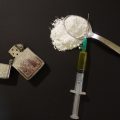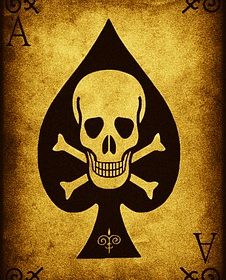18 FEBRUARY 2019
DE FAAKTO OUTBREAK INTELLIGENCE
SITUATION-DENGUE FEVER EPIDEMIC-REUNION ISLAND INDIAN OCEAN
MEDIUM INTENSITY EPIDEMIC-DENGUE FEVER
The Prefect of Reunion-ARS Indian Ocean-For health in Reunion and Mayotte, has activated level 4 of the ORSEC to fight against arboviruses,
- 7346 indigenous dengue cases ( including 476 cases since 1 st January 2019)
- 16 imported cases (including 5 cases imported in 2019)
- 173 hospitalizations for dengue (including 18 hospitalizations since 1 st January 2019)
- 502 emergency room visits (including 27 passages in 2019)
- 6 deaths of which 3 were considered, after investigation, as directly related to dengue fever
- The objective of the transition to level 4 is to challenge all the actors involved and more broadly the population of Reunion for a collective and massive mobilization during the austral winter to stop as much as possible the spread of the dengue virus before the return of summer conditions
The transition to level 4 of the ORSEC device is accompanied by the launch or reinforcement of several dengue control devices:
- Remobilization of all actors
- Accelerated recruitment of subsidized contracts
- Activation of the RSMA in support of vector control
- Progressive deployment of volunteers to civic service
- Distribution of repellents to target audiences
- Awareness of doctors and pharmacists
- Strengthening communication
Prefect of Reunion, in consultation with the Director General of the ARS Indian Ocean https://www.ocean-indien.ars.sante.fr/epidemie-niveau-4-chiffres-et-zones-concernees
What is Dengue Fever?
- Dengue is a mosquito-borne viral infection causing a severe flu-like illness and, sometimes causing a potentially lethal complication called severe dengue. The incidence of dengue has increased 30-fold over the last 50 years. Up to 50-100 million infections are now estimated to occur annually in over 100 endemic countries, putting almost half of the world’s population at risk. (WHO, 2018)
What are the Symptoms of Dengue Fever?
A person infected by the dengue virus develops severe flu-like symptoms
Individuals should suspect dengue when a high fever (40°C/ 104°F) is accompanied by two of the following symptoms:
Severe headache
Pain behind the eyes
Nausea, Vomiting
Swollen glands
Muscle and joint pains
Rash
Symptoms usually last for 2-7 days, after an incubation period of 4-10 days after the bite from an infected mosquito
Severe dengue is a potentially deadly complication due to plasma leaking, fluid accumulation, respiratory distress, severe bleeding, or organ impairment. The warning signs to look out for occur 3-7 days after the first symptoms in conjunction with a decrease in temperature (below 38°C/ 100°F) include:
Severe abdominal pain
Persistent vomiting
Rapid breathing
Bleeding gums
Blood in vomit
Fatigue, restlessness
The next 24-48 hours of the critical stage can be lethal; proper medical care is needed to avoid complications and risk of death (WHO, 2018)
Treatment
There is no specific treatment for dengue fever.
Patients should seek medical advice, rest and drink plenty of fluids. Paracetamol can be taken to bring down fever and reduce joint pains. However, aspirin or ibuprofen should not be taken since they can increase the risk of bleeding.
For severe dengue, medical care by physicians and nurses experienced with the effects and progression of the disease can frequently save lives. Maintenance of the patient’s circulating fluid volume is the central feature of such care. (WHO, 2018)
Prevention and control
The only current method of controlling or preventing dengue virus transmission is to effectively combat the vector mosquitoes. (WHO, 2018)
http://www.who.int/denguecontrol/human/en/
Dengue Hemorrhagic Fever (DHF) – is a more severe form, seen only in a small proportion of those infected. DHF is a stereotypic illness characterized by 3 phases; febrile phase with high continuous fever usually lasting for less than 7 days; critical phase (plasma leaking) lasting 1-2 days usually apparent when fever comes down, leading to shock if not detected and treated early; convalescence phase lasting 2-5 days with improvement of appetite, bradycardia (slow heart rate), convalescent rash (white patches in red background), often accompanied by generalized itching (more intense in palms and soles), and diuresis (increase urine output). (WHO, 2018)
Dengue Shock Syndrome (DSS) — Shock syndrome is a dangerous complication of dengue infection and is associated with high mortality. Severe dengue occurs as a result of secondary infection with a different virus serotype. Increased vascular permeability, together with myocardial dysfunction and dehydration, contribute to the development of shock, with resultant multiorgan failure. (WHO 2018)
WHO https://www.who.int/en/news-room/fact-sheets/detail/dengue-and-severe-dengue






